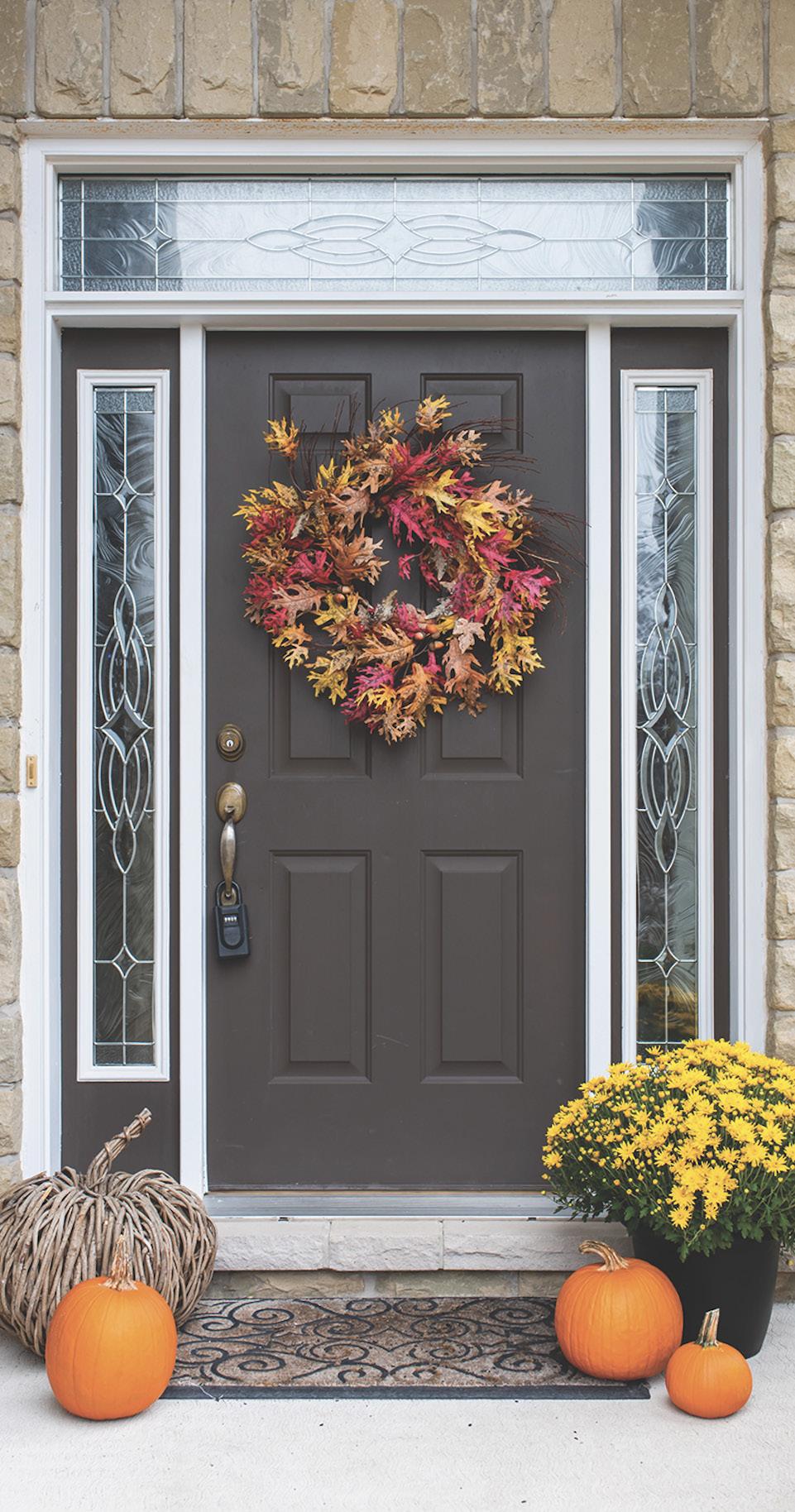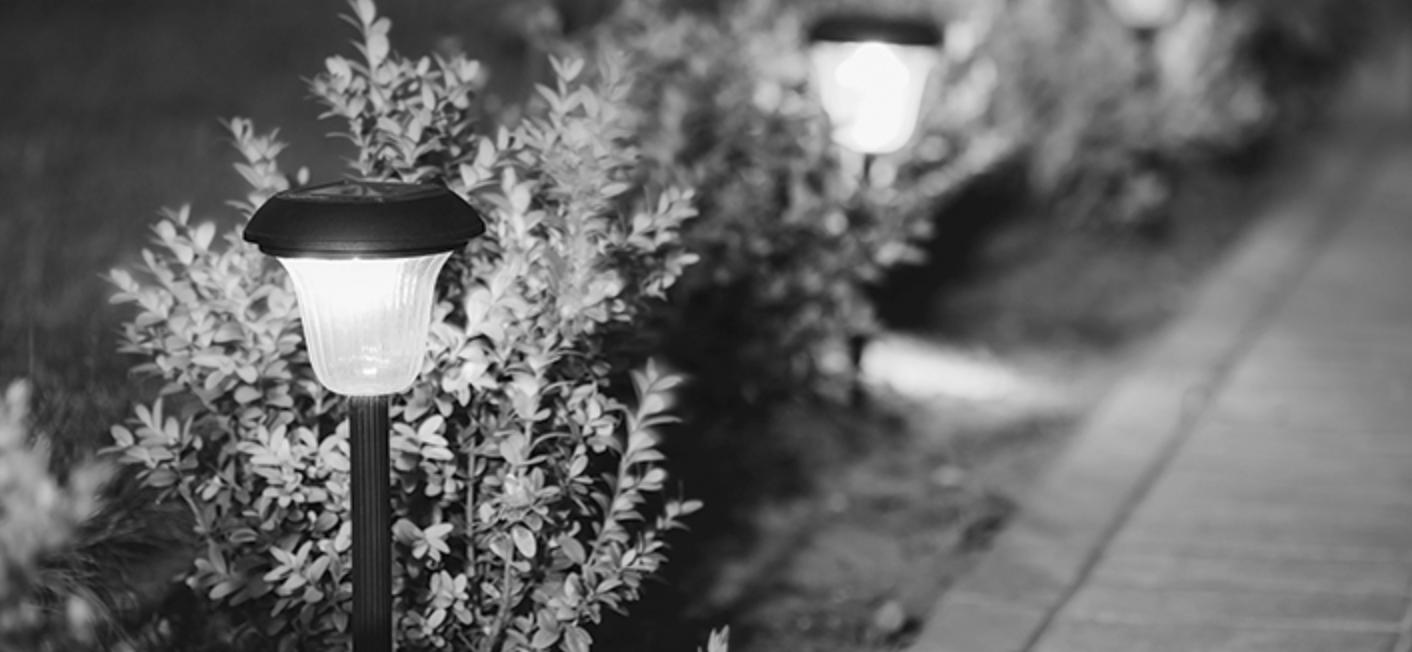








Spring is the season most often associated with lawn care, and for good reason. Grass starts growing in spring, and the season is a great time to fertilize many grasses in the hopes lawns can look their best and endure the hotter, dryer weather of summer.
Spring might mark the time when many homeowners begin tending to their lawns each year, but it’s important to recognize the significance of fall lawn care as well. Grasses vary, and homeowners are urged to identify which type of grass is in their lawn so they can ensure it gets the care it needs before winter’s first frost. Cool-season grasses like perennial ryegrass and Kentucky bluegrass are common in various regions, and
the following strategies can help homeowners with these types of grasses tend to their lawns this fall.
• Stick to your recommended fertilization schedule. Homeowners who have been fertilizing since spring are urged to continue doing so in fall at the recommended interval. It’s easy to forget to fertilize in fall thanks to cooler temperatures that don’t call lawn care to mind and busier schedules after school starts again and summer vacation season ends. But many fertilizer manufacturers advise users of their products to fertilize several times over the course of the year, including in fall. Stick to the intervals recommended on the packaging of the fertilizer you’ve been using,
making sure not to forget to fertilize this fall.
• Conduct a soil test. A soil test can determine if the soil is lacking any nutritive elements it needs to come back strong in spring. Certain amendments can restore pH balance if necessary and foster stronger growth when lawns come back in spring.
• Aerate, if necessary. Soil can become compacted over time, and that can cause a range of problems for a lawn. Compacted soil can make it harder for water to reach the roots of grass, which weakens grass and makes it more vulnerable to damage during adverse weather events like drought. Compacted soil also makes it harder for nutrients in fertilizer to get into the






soil. Aerating is best left to professionals, particularly in larger lawns, as the job can foster strong root development when done properly.
• Remove thatch where it’s excessive. Thin layers of thatch can benefit lawns by delivering nutrients from glass clippings and leaves to a lawn. However, when thatch is excessive, it can block air, water and even fertilizer from reaching the soil. Thatch often can be removed with a rake, but lawns with especially thick layers of thatch may need to be scarified. Homeowners can take a DIY approach to scarifying or hire a landscaping professional to dethatch the lawn and remove the thatch from their properties.
• Continue to water the




lawn. A cool-season grass will continue to require water into the fall. Though the lawn won’t need to be watered as frequently in fall as in summer, various lawn care professionals note cool-season grasses still need roughly an inch of water each week in fall.
• Remove leaves as they fall. Fallen leaves can affect a lawn in much the same way as excessive amounts of thatch, blocking water and nutrients from reaching the soil. So it’s best to remove fallen leaves, especially when they begin to fall in large quantities.
Fall is an opportune time to tend to a lawn to increase the chances grass grows back strong in spring.
— Metro Creative











Outdoor living spaces can be welcoming areas to spend time in nature. Such spaces expand the possibilities for entertaining, as they tend to have more room for guests than home interiors, and they enable people to enjoy sunshine, fresh air and the sounds and sights of wildlife in relaxing settings. When planning outdoor living areas, homeowners must not underestimate the significance of drainage.
Patios, pergolas, decks, and landscaping can increase comfort and convenience for homeowners. In fact, connection to the outdoors ranked high on the top 10 list of design drivers in “The Future of Home Design,” a survey conducted by the New Home Trends Institute in collaboration with Pro Builder. Fifty-eight percent of survey respondents said connection to the outdoors will be an important influence on their design choices in the years to come.
When planning outdoor living spaces, it is easy to focus on aesthetic appeal and the finished project. But homeowners must carefully consider the impact these modifications will have on the landscape, particularly how they will affect drainage so it will not compromise the integrity of the new design nor impact the surrounding home and other structures.
According to Kelly Masonry in Pennsylvania, without proper drainage, water can accumulate and that can lead to various issues. Here’s a more in-depth look at why drainage is crucial when planning outdoor living areas.
• Drainage prevents water

damage. When water is allowed to collect on patios and in and around hardscaping features, it can cause the materials to deteriorate over the years. Pavers or stones may shift, crack or become discolored, eventually becoming less safe.
• Drainage reduces accessibility issues and safety hazards. Pooling water can make hard surfaces slippery, possibly leading to falls and other accidents. It also can make lawns soggy and muddy, which can limit easy access to areas of the yard.
• Drainage reduces soil ero -
sion. Water can cause erosion of surrounding soil, leading to uneven surfaces. Erosion also may threaten the stability of nearby structures.
• Drainage deters water infiltration. Water has a way of finding cracks and crevices and thus entering structures. Rainwater that is not properly directed away from a home may eventually seep into the foundation, causing anything from structural damage to mold and mildew to making damp areas conducive to pests.
Homeowners have different options when it comes to drainage in their outdoor liv-
ing areas. Masonry experts will design patios with a slight slope to allow water to naturally flow away from the surface toward drainage areas. Together with well-placed gutters and downspouts, water can be directed away from the home.
Homeowners also might want to consider two different types of drain systems. French drains are a system that involves a trench filled with perforated pipe and gravel to allow water to drain naturally from the yard, according to the Home Depot. French drains can redirect water away
from living areas. Channel drains are another type of system. Central Turf & Irrigation Supply says channel drains are perimeter drains around patios and other hardscaping that act as an intercepter to prevent water from going where it isn’t desired. They are narrow trenches with a grate on top so that water enters and flows away.
Drainage is an essential consideration when planning outdoor living areas. Homeowners must use slope, drains and even vegetation to mitigate water issues on a property.
- Metro Creative

Landscape lighting has been growing in popularity, and industry experts anticipate that growth will continue for years to come. According to the market research firm Technavio, the market size for outdoor landscape lighting is estimated to grow by nearly $133 million between 2024 and 2028. That growth is evident in data sheets, but it’s also visible to the naked eye, as more and more property owners are utilizing outdoor landscape lighting to increase security and draw attention to their lawns and various features on them.
Homeowners considering adding landscape lighting to their properties may be overwhelmed by the options at their disposal. Indeed, there are many ways for homeowners to accentuate landscape features and create a stunning nighttime look. The following
rundown of landscape lighting options can illuminate the many different ways homeowners can use light to make their properties more appealing at night.
• Spotlights: Spotlights are among the more popular landscape lighting options. Spotlights are used by fans of uplighting, which places the light beneath a particular feature and then aims light upward to draw attention to it. Many homeowners utilize spotlights and uplighting to illuminate statues and trees.
• Step lights: Step lights help to make moving around a property at night more safe. Step lights are installed on the vertical face of the step or along the sides of each step. Homeowners who have a deck may find step lights particularly useful, especially if the deck is
multi-level and/or attached to a staircase that leads down into a yard.
• Flood lights: Flood lights are a type of spotlight that are generally used to illuminate large areas, such as a driveway or a deck. Flood lights illuminate from above, so these typically are best for lighting up manmade portions of a home’s exterior rather than natural features like trees or gardens.
• Garden lights: Garden lights direct light downward toward a garden. These provide a soft light that can draw attention to plants at dusk and throughout the night. Many homeowners like the sense of serenity garden lights help to create during twilight and evening hours.
• Path lights: Similar to step lights, path lights typically are installed as a safety feature. But path lights still
boast aesthetic appeal, as they help to light up walkways and driveways without providing a burst of light that can feel overwhelming for residents and visitors. Path lights come in a variety of styles and sizes, so homeowners can experiment with their options to find the one that best suits their needs.
• Ground lighting: Ground lighting is like recessed lighting inside a home, only these lights are placed in the ground and send light upward rather than downward from a ceiling. Ground lighting fixtures are often installed in gardens, directing light upward toward shrubs or trees.
Homeowners can illuminate their home exteriors in numerous ways, each of which can add to a property’s aesthetic appeal at night.

When the summer entertaining season draws to a close, homeowners need to ensure their outdoor living areas can handle weather that’s right around the corner. Although outdoor furniture and other items tend to be durable, the impact snow, wind and ice can have on them may lead to damage over time. That is why many homeowners take steps to winterize their outdoor spaces and protect their belongings. Here’s a look at how to prepare for the winter to come.
• Furniture: Cover or store furniture to protect it from the elements. Covering it with weather-proof covers can be adequate if storing items indoors is not possible.
• Deep clean: Items that will be covered or stored should be thoroughly cleaned prior to being removed from spaces for the season. Lingering dirt and moisture can cause damage.
• Insulate and drain: Don’t risk damage to pipes, which can freeze and crack in the cold. Shut off the water supply
to exterior faucets and drain water lines to prevent pipes from freezing and bursting. Use foam pipe insulation to prevent freezing and cover any exposed pipes.
• Apply mulch: After cleaning up garden debris, think about applying mulch to garden beds and cover tender plants to protect them from the weather.
• Check gutters: Be sure that gutters and downspouts are clear of leaves and any additional debris. If gutters and downspouts are not cleaned,
ice dams may form on the roof and cause water damage.
• Inspect and repair: Inspect walkways and driveways for any damage and make repairs now so water will not seep in and cause further issues with freeze-thaw cycles. Consider applying a sealant to protect surfaces from snow and ice.
• Pools and spas: It’s essential to follow the industry or manufacturer recommendations for closing down swimming pools and spas for the season. While covers may not be essential in all climates,
covering can help prevent leaves and other debris from getting in the water. Water should be expelled from pipes and tubing to prevent freezing and bursting. If space allows, consider moving the pool pump indoors to prolong its longevity. Turn off the electricity to the outlet where the filter is plugged in.
There may be additional, region-specific steps to winterize a property, but these pointers are a good starting point to protect outdoor spaces.
— Metro Creative
Home improvement projects run the gamut from complex undertakings like room additions to simpler renovations like a new front door. Some home renovations excite homeowners more than others, but all improvements are a way to make a home safer, more comfortable and/or more functional.
A gutter replacement might not inspire the same level of excitement as a room addition or an overhaul of an outdoor living space, but new gutters can help to prevent roof damage and make properties safer by ensuring rain water is directed away from walkways. Homeowners who suspect it might be time for a gutter replacement can look for these signs of fading gutters.

• Cracks or splits: Cracks or splits at the seams of the gutters where two pieces connect is a telltale sign they need to be replaced. Cracks or splits are can slowly lead to separation of gutter pieces, which will lead to leaks. But not all cracks or splits are found at the seams. In fact, some homes feature seamless gutters, which also can crack or split. Regardless of where they’re found, cracks or splits are a warning signs of fading gutters.
• Rust: Rust is rarely a good sign whether you’re looking at a vehicle or even garden tools. Rust also is a bad sign in relation to gutters. Gutters are
Cont. 7












painted, and not only for aesthetic purposes. Paint on gutter also serves to protect them from water. When paint begins to flake, gutters will begin to rust and may even produce noticeable rust flakes on the ground below. Rust on gutters and rust flakes beneath them are indicative of gutters that need
to be replaced.
• Gutters pulling away from the home: Gutters that appear to be pulling away from the home is a sign that they need to be replaced. Gutters are fastened to a home during installation, which ensures they can withstand rain and water. Over time, those fasteners can wear down, ultimately leading to gutters that appear to be pulling away
from the home. Though gutters can be refastened, eventually they will need to be replaced.
• Pooling water: Pooling water in a gutter may just be a sign that gutters need to be cleaned. However, pooling water on the ground directly beneath gutters indicates they’re not effectively directing water away from the home.
• Water damage inside: A home’s interior might not be the first place homeowners look when inspecting for damaged gutters, but a flooded basement or crawl space could indicate a gutter problem. Gutters and downspouts are designed to direct water away from a home when functioning properly. When that isn’t happening, water can pool beneath the foundation, leading to pooling water and other water damage in basements and crawl spaces.





Gutter replacement projects may not be exciting, but new gutters can make a home safer and prolong the life of a roof and other features on a property.
— Metro Creative














Home renovations are significant undertakings. Though some projects require more sizable investments of time and money than others, all merit homeowners’ attention and inspire some excitement when pondering the finished product.
A finished product tends to offer more appeal when the project is overseen and undertaken by a professional contractor. Small projects may be in the wheelhouse of skilled do-it-yourselfers, but most homeowners are best served leaving home renovations to the professionals. Finding the right contractor for a given job is of the utmost importance, and the following are some tips to help homeowners do just that.
• Seek word-of-mouth recommendations. Word-of-mouth advertising has long been recognized as an invaluable tool to attract customers, and for good reason. A 2025 report on the state of the roofing industry provided by Roofing Contractor, the official publication for
the International Roofing Expo®, found that 79 percent of homeowners identify word-of-mouth as the top way to find a roofing professional. Word-of-mouth is so valued because homeowners can ask friends or neighbors about their experiences with a given professional in a pressure-free setting. Word-of-mouth also can help homeowners cut down on the pool of potential contractor candidates, which is no small benefit in markets flooded with renovation professionals.
• Secure multiple written estimates. It can be time-consuming to speak to multiple contractors and secure written estimates from each one, but such legwork is well worth the effort if the end result is finding the right contractor. Secure multiple estimates even if the first one provided to you is below budget. Multiple estimates allow homeowners to compare what’s included, and not included, in each one. Some contractors offering low estimates may not include materials


costs or additional factors that will increase the price. Others may seem more expensive initially but may prove more affordable than competitors if their estimates include all of the costs associated with the project. Only a direct comparison of multiple estimates, which should include details specific to the project and an itemized list of what will be provided and performed by the contractor, can give homeowners an idea of what they’re paying for.
• Stay local when possible. Hiring local contractors is beneficial for a number of reasons. Hiring locals keeps money in the community and thus supports the local economy. And working with local contractors can make it easier for homeowners to keep lines of communication open. Many projects also require a little post-completion upkeep or even some tweaks, which is more easily accomplished when working with contractors based nearby. And finally, local contractors will be familiar
with building codes and other details specific to a given town. That familiarity can ensure a project is done in adherence to codes and not stalled by permit- or inspection-related delays.
• Confirm their insurance. Travelers Insurance urges homeowners to confirm a contractor is properly insured and bonded prior to signing a contract. Contractors should be willing to provide a certificate of insurance (COI) that indicates their provider, policy number and coverage limits. Travelers also notes homeowners can contact insurers directly to verify coverage and ensure the policy is current. Never hire a contractor who is uninsured or unwilling to provide proof of insurance.
Hiring a contractor to perform a home renovation may be a leap of faith, but homeowners can take steps to ensure they find the right professional for the job.

A successful kitchen renovation project requires careful planning and a detailed vision of what the space will look like upon completion. Whether a homeowner is thinking about giving the kitchen a major overhaul or just a minor refresh, bringing that vision to life doesn’t happen overnight. There is a process that must go into a kitchen renovation. Embarking on a kitchen remodel can be an exciting venture and homeowners may be eager to dive right in, but familiarizing oneself with what to expect prior to the start can help property owners navigate the process more smoothly.
• Inspiration and design: The first phase involves dreaming up kitchen plans and making practical decisions regarding efficiency and functionality. Considerable time may be spent working with a designer and architect, which will involve choosing materials and a color scheme.
• Creating a budget: According to Angi, the average kitchen remodel costs $26,934, but price ultimately varies depending on the scope of the work. Costs may be less or more depending on the size of the kitchen and the materials chosen.
• Demolition: Before a homeowner can have a new kitchen, the old one must be removed. The real physical transformation begins with the demolition, which tends to be quick but messy. It is essential to set up an alternative “mini kitchen” elsewhere, or expect to be dining out throughout the remodel. The demo process may reveal any issues that will need to be remedied before the real work

can begin, such as structural damage, leaks, mold, or other hiccups.
• Contractor work begins: It can take one to three weeks for contractors to install plumbing, mechanical components, electrical wiring, ductwork, and more, followed by structural needs and drywall, according to sink and faucet manufacturer Blanco. Flooring and cabinets will follow, and can take another week or more. Fabricat-
ing custom countertops is a lengthy process and can represent the bulk of a kitchen renovation timeline. Expect a few weeks for countertops to be measured, made and then installed.
• Appliances and finishing touches: Appliances will be delivered and hooked up at the tail end of the renovation. Finally, the backsplash, fixtures and lighting are put into place. The last leg of the remodel will include painting,
trim work and installation of hardware on cabinets and drawers.
Once all the work is done, it is essential for homeowners to make sure everything is to their liking. According to HGTV and Kitchy Crouse of CK Interior Design, a regular kitchen renovation can take anywhere from six to 12 weeks. With so much time devoted to the space, homeowners should ensure it lives up to their expectations.
As the renovation begins, homeowners should remember that unexpected issues can arise, including delays due to material availability or unforeseen challenges. Maintaining an open communication with the contractor, asking questions and remaining flexible helps. Although a kitchen remodel is initially disruptive, it is an investment that ultimately enhances a home’s value.

No one enjoys being in cramped quarters. Whether a person battles a legitimate case of claustrophobia when confined in tight spaces or simply prefers a place to stretch out, there’s no denying the appeal of a little extra room. That’s particularly so at home, where cramped spaces can make it hard to unwind.
When homeowners feel their walls are closing in on them, many choose to build space via a room addition. Room addition projects are extensive and expensive undertakings, with the home renovation experts at Angi estimating the average add-on costs $48,000. But Angi estimates such projects can cost as much as $72,600, or even more depending on the size of the space and the features chosen.
The financial commitment when adding a room is significant, but homeowners and residents also will need to
prepare for a potentially lengthy disruption to their daily routines. Various online resources, including Angi, suggest room addition projects typically take around three to four months. With so much at stake, homeowners who think they might benefit from a room addition can look for various signs to help them determine if such a project is right for them.
• Increasingly cluttered spaces: Cramped quarters without much space for people are perhaps the most notable sign that residents can benefit from some additional space in a home. Cluttered spaces suggest homeowners may have run out of room for their stuff, and a custom addition can provide that extra room while contributing to a more calming ambiance in common spaces that may no longer be overwhelmed by papers, toys and other items that can quickly take over a home that lacks space.
• Lifestyle hurdles: Millions of homeowners like to entertain friends and family, and that’s more manageable for some than it is for others. If interior or exterior spaces do not accommodate hosting, a room addition that expands an existing kitchen or living room might be the ideal renovation project.
• Functionally challenged: A home that no longer has enough space to meet your needs is another sign a room addition might be in order. This very issue emerged for millions of professionals during the COVID-19 pandemic and has remained a challenge ever since. Indeed, an increase in days spent working remotely has left many homeowners grateful to work from home but desirous of a designated remote work space. A room addition to accommodate a home office can be just what remote workers need to restore
fully functional status to their homes.
• Cost: While the sticker price of a home addition may (or may not) raise an eyebrow, the project is almost certain to prove more cost-effective than moving. According to data from the U.S. Census Bureau and the U.S. Department of Housing and Urban Development, the average sale price of a home in the United States reached $503,800 in January 2025. While that marked a roughly $16,000 decrease from a year earlier, it’s still a high figure that many homeowners aren’t willing to pay. A cost comparison detailing the price to move versus the price to build an addition may indicate that the latter option is a homeowner’s best bet. A room addition could be the perfect renovation project for homeowners who need more space but still prefer to stay put.
— Metro Creative
Decorating the exterior of a home for the holiday season is a beloved tradition in countless households. In the movie “National Lampoon’s Christmas Vacation,” Clark Griswold had “250 strands of imported Italian twinkle lights,” each with 100 bulbs per strand. His grand total of 25,000 lights caused a temporary blackout. While driving around to take in holiday lighting displays, many people may see some that emulate Clark Griswold’s vision and be inspired to create their own designs.
Lights are just one type of home decoration. Wreaths, inflatables, metal or wooden structures, and much more are part of holiday displays as well. While decorating can be fun and festive, it’s also important to ensure that it is done safely. The following tips, courtesy of Travelers Risk Consultants and Meyer Landscaping & Design, can keep family and friends safe during this wonderful time of year.
• Plan ahead. Determine how many electrical outlets you have and plan the display around the accessibility of those outlets. Be sure to calculate the maximum amount of wattage allowed so you do not overload the electrical system. Never exceed the maximum number of strings or devices that may be linked together. Lighting packaging should provide such information. Also, plug all outdoor lights and decorations into ground-fault circuit interrupters to reduce the risk of electric shock.
• Test the lights. Only purchase lights that have been tested for safety. Look for a certification mark from UL, ETL, CSA, or another nationally recognized laboratory.
• Go with LED. Light emitting diode string lights run cooler, last longer and use less energy than incandescent lights.
• Inspect decorations. Make sure all the lights, electrical cords, lighted holiday decor, and inflatables are in good condition before use. Dispose of anything that has frayed wiring or is broken.
• Use only outdoor-rated products. Be sure the extension cords and any other products are rated for the outdoors. Electrical connections should be kept clean and dry before plugging things in, and an extra step of wrapping plug connections with electrical tape can further reduce moisture.
• Practice ladder safety. Ladders are often utilized when adding lights or other decor to homes. Always be safe on and around ladders. It’s essential to maintain three points of contact while on the ladder. Don’t risk leaning too hard to one side while on the ladder, and always have a spotter. Use wooden or fiberglass ladders when stringing electrical decor and lights, as metal ladders conduct electricity.
• Identify where power lines are located. Be mindful of power lines when decorating outdoors. Keep oneself and decorations at least 10 feet away from power lines.
• Skip staples and nails. Nails and staples should not be used when decorating. Nails and staples can puncture the protective layers of a home, allowing moisture to get in and break down the structure of the home. A nail or staple also may accidentally puncture an electrical cord, increasing the risk of electrocution. Use hooks and other attachment devices specially designed for holiday decor.
• Avoid items that can contribute to roof damage. Heavy items on the roof can cause unnecessary stress to shingles and result in damage. Only use lightweight and appropriately anchored items on the roof.
• Dress appropriately. Before hanging holiday decorations and lights, assess the conditions and wear the proper clothing for the weather. If the weather is especially rough, skip decorating for a safer day.
Decorating safety is of the utmost importance and should be a priority this holiday season.
















